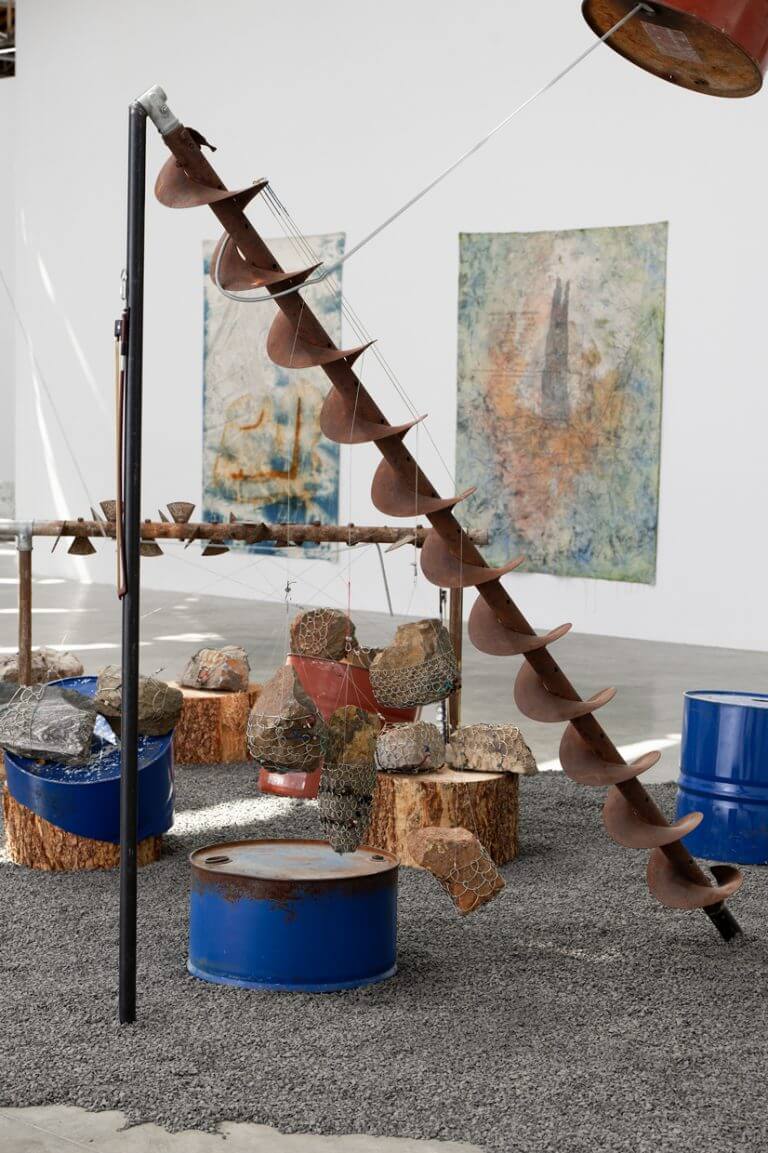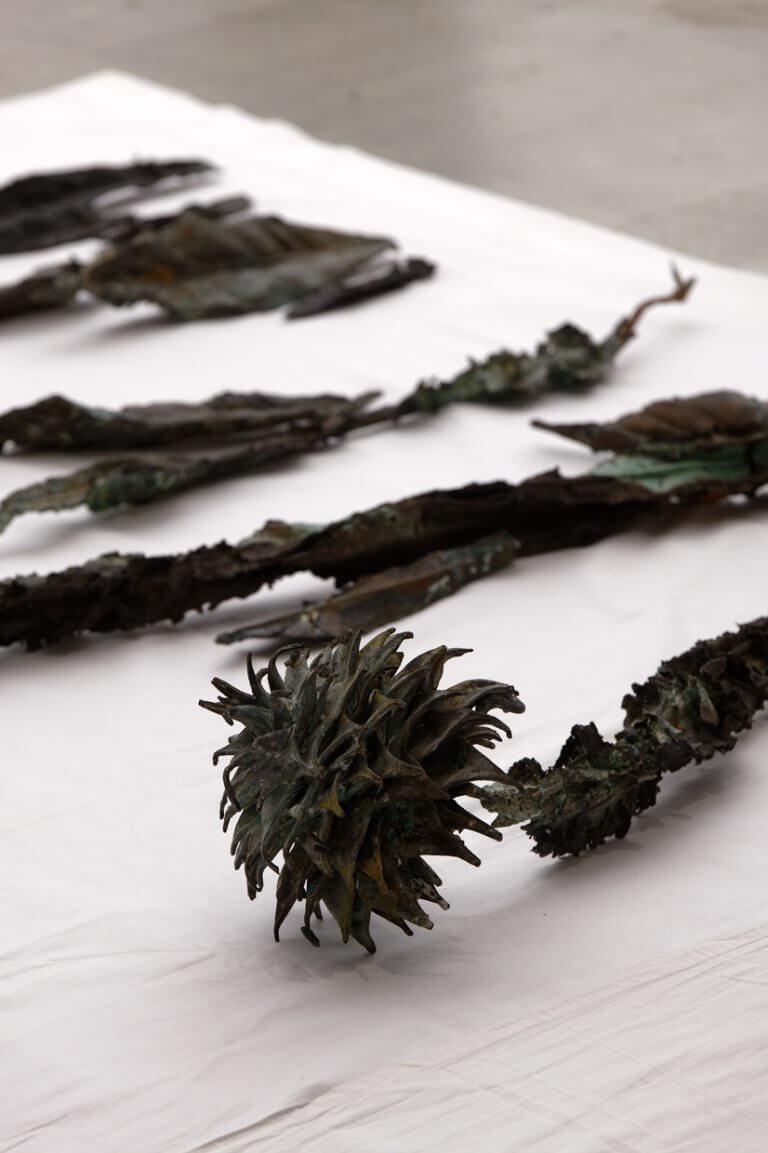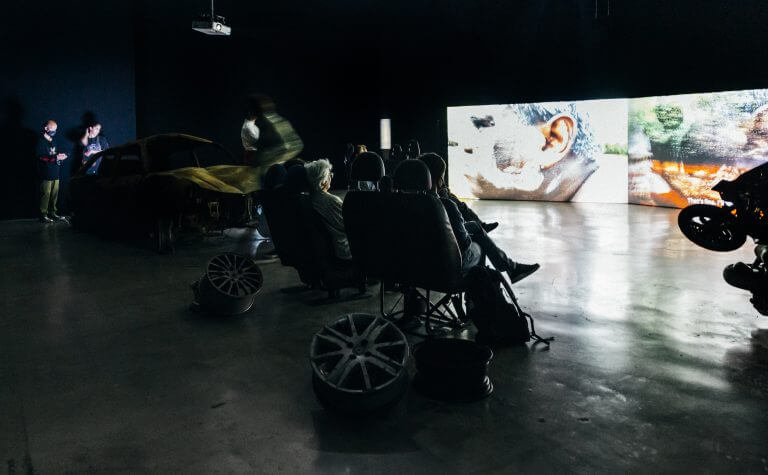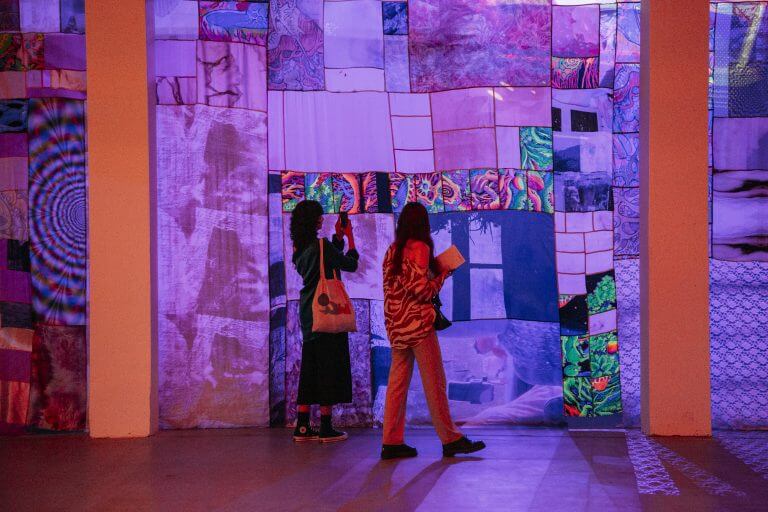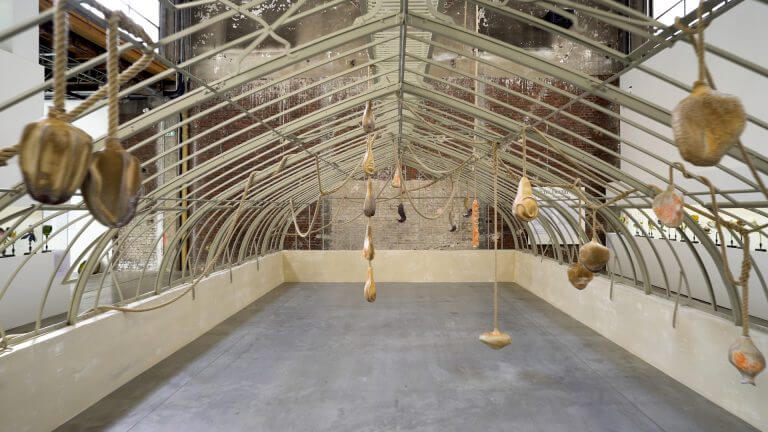SEARCH THE ENTIRE SITE
Reclaim the Earth
Reclaim the Earth1 is a wake-up call, as much as a rallying cry. The origins of this collective exhibition can be found in an observation by its scientific advisor, Ariel Salleh: “Bringing ecology, feminism, socialism and Indigenous politics together means giving up the Eurocentric lens for a genuinely global one.”2 In its determination to think the world beyond the Nature-Culture divide, the exhibition follows the trajectories of artists with a different approach to elements – earth, air, fire, water, plants and minerals, irreducible to their mere materiality. They are both medium and tool – cultural, historic and political vectors being revitalised in a context of ecological emergency.
Fourteen artists, from different generations and cultural origins, examine links between body and land, our primordial human relation to soil and everything it nurtures, the disappearance of certain species, the transmission of Indigenous stories and knowledges, gleaning and collecting, or social justice and collective healing. These artists show us that we are not just “face to face with a landscape,” nor “living on Earth” but a part of it. We are indeed part of the great “soil community”3 as spoken by Rachel Carson, who gave birth to the ecology movement. We need to replace relations of domination and subordination, and to consider instead kinship and alliances, as “the Earth is neither a natural reserve, nor an agricultural resource, it is a skein of relationships between minerals, plants, animals and humans.”4 Our era needs to leave behind the obsolete model of an extractivist society and put humans back into their right place; no longer individuals separated from their environments, but “relational entities.”5
The artists in Reclaim the Earth help us think and feel about a nature that is charged, intensified and active. They rummage the Earth, literally and metaphorically, transforming subterranean roots into aerial ones, foregrounding, even re-inventing, narratives that have been forgotten or reduced to silence. Léuli Eshrāghi, scientific advisor of the exhibition, thus emphasises the need for reparation, care and healing among Indigenous cultures invalidated by colonialism. Drawing away from the Eurocentric vision, the artists imagine new connections with the living environment. Their actions form a complex assemblage of practices, across multiple scales: with land, with ancestors, with human and non-human life, as well as a conversation with visual culture. Of particular concern are Indigenous bonds with territory, but also social, cultural or spiritual conventions, testifying to the decolonial resurgence of knowing ‘how to think’, knowing ‘how to do’, and knowing ‘how to be in the world’.
(1) After the early collection of ecofeminist texts: Reclaim the Earth: Women Speak Out for Life on Earth, edited by Leonie Caldecott and Stephanie Leland
(London: The Women’s Press, 1983)
(2) Ariel Salleh, Ecofeminism as Politics: nature, Marx, and the postmodern (London: Zed Books, 1997/2017), p. 153.
(3) Rachel Carson, Printemps silencieux (Marseille: Wildproject, 2020), p.98 (original publication Silent Spring, 1962).
(4) Barbara Glowczewski, Réveiller les esprits de la terre (Bellevaux: Dehors, 2021), p. 266.
(5) Arturo Escobar, Sentir-penser avec la terre. Une écologie au-delà de l’Occident (Paris: Seuil, 2018), p. 136
FROM 15/04/2022 TO 04/09/2022
Artists : Abbas Akhavan, Amakaba x Olaniyi Studio, asinnajaq, Huma Bhabha, Seba Calfuqueo, Megan Cope, D Harding, Karrabing Film Collective, Kate Newby, Daniela Ortiz, Solange Pessoa, Yhonnie Scarce, Thu-Van Tran, Judy Watson
Assistant curator : Lisa Colin
Scientific advisors : Léuli Eshrāghi, Ariel Salleh
